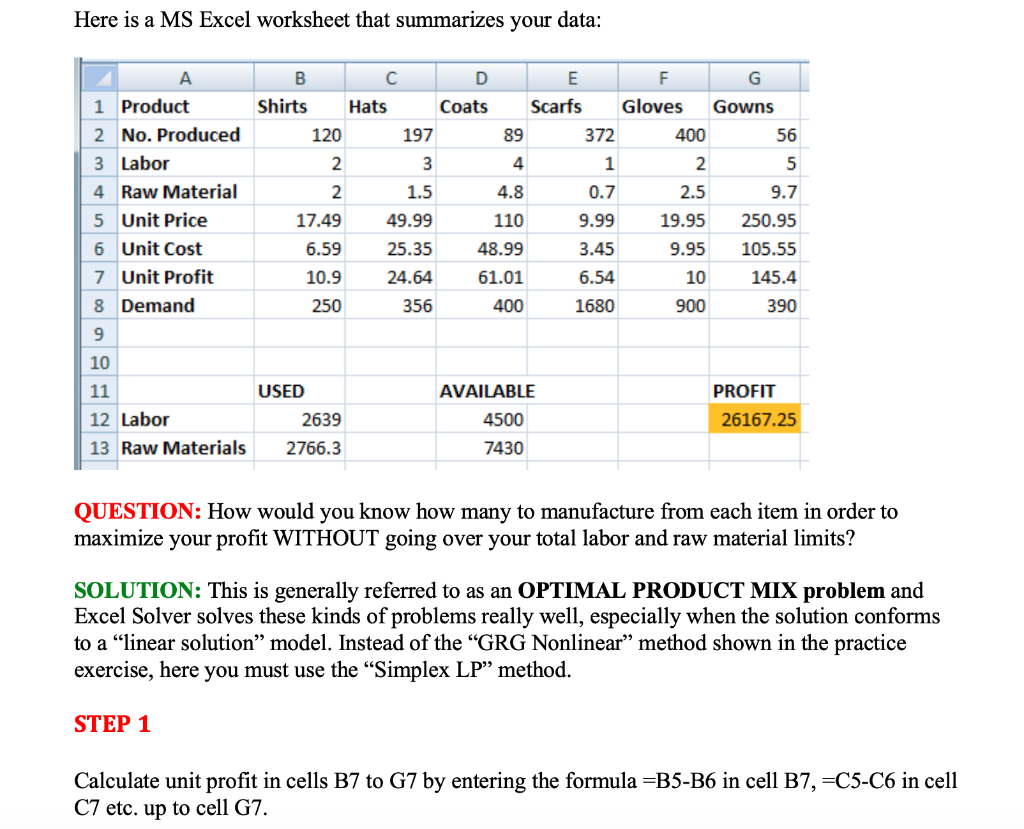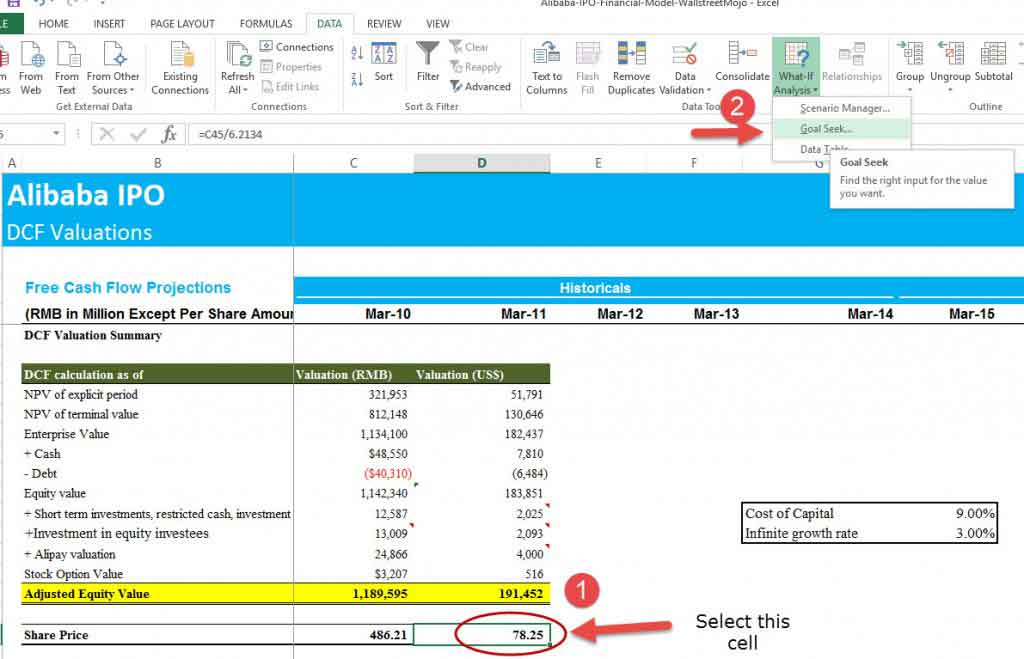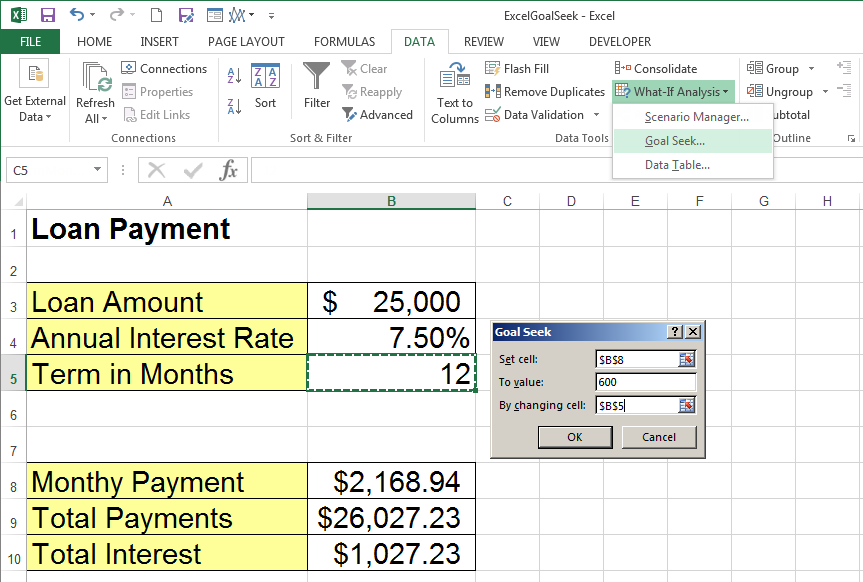

Click in the 'To value' box and type 70.ħ. On the Data tab, in the Forecast group, click What-If Analysis.Ħ. The grade on the fourth exam in cell B5 is the input cell.ģ. You can always ask an expert in the Excel Tech Community or get support in the Answers community.2. You can apply constraints to restrict the values that Solver can use in the model, and the constraints can refer to other cells that affect the target cell formula. Solver adjusts the values in the changing cells that you specify-called the adjustable cells-to produce the result that you specify from the target cell formula.


Solver works with a group of cells that are related to the formula in the target cell. By using Solver, you can find an optimal value for a formula in one cell-called the target cell-on a worksheet. To extend complex and nonlinear data, you can use worksheet functions or the regression analysis tool in the Analysis ToolPak Add-in.Īlthough Goal Seek can accommodate only one variable, you can project backward for more variables by using the Solver add-in.
#HOW TO USE GOAL SEEK EXCEL 2016 SERIES#
You can fill in a series of values that fit a simple linear trend or an exponential growth trend by using the fill handle or the Series command. If you want to prepare forecasts, you can use Excel to automatically generate future values that are based on existing data, or to automatically generate extrapolated values that are based on linear trend or growth trend calculations. A scenario report displays all the scenario information in one table on a new worksheet. If several people have specific information in separate workbooks that you want to use in scenarios, you can collect those workbooks and merge their scenarios.Īfter you have created or gathered all the scenarios that you need, you can create a Scenario Summary Report that incorporates information from those scenarios. When you switch between scenarios, the result cell changes to reflect the different changing cell values. For each scenario, you specify the cells that change and the values to use for that scenario. You can use the Scenario Manager to create both scenarios on the same worksheet, and then switch between them. You can create and save different groups of values on a worksheet and then switch to any of these new scenarios to view different results.įor example, suppose you have two budget scenarios: a worst case and a best case. You can also create forecasts by using the fill handle and various commands that are built into Excel.įor more advanced models, you can use the Analysis ToolPak add-in.Ī Scenario is a set of values that Excel saves and can substitute automatically in cells on a worksheet. The Solver add-in is similar to Goal Seek, but it can accommodate more variables.
#HOW TO USE GOAL SEEK EXCEL 2016 INSTALL#
In addition to these three tools, you can install add-ins that help you perform What-If Analysis, such as the Solver add-in. Goal Seek works differently from Scenarios and Data Tables in that it takes a result and determines possible input values that produce that result. A Scenario can have multiple variables, but it can only accommodate up to 32 values. A Data Table works with only one or two variables, but it can accept many different values for those variables. Scenarios and Data tables take sets of input values and determine possible results. Three kinds of What-If Analysis tools come with Excel: Scenarios, Goal Seek, and Data Tables. What-If Analysis is the process of changing the values in cells to see how those changes will affect the outcome of formulas on the worksheet.


 0 kommentar(er)
0 kommentar(er)
